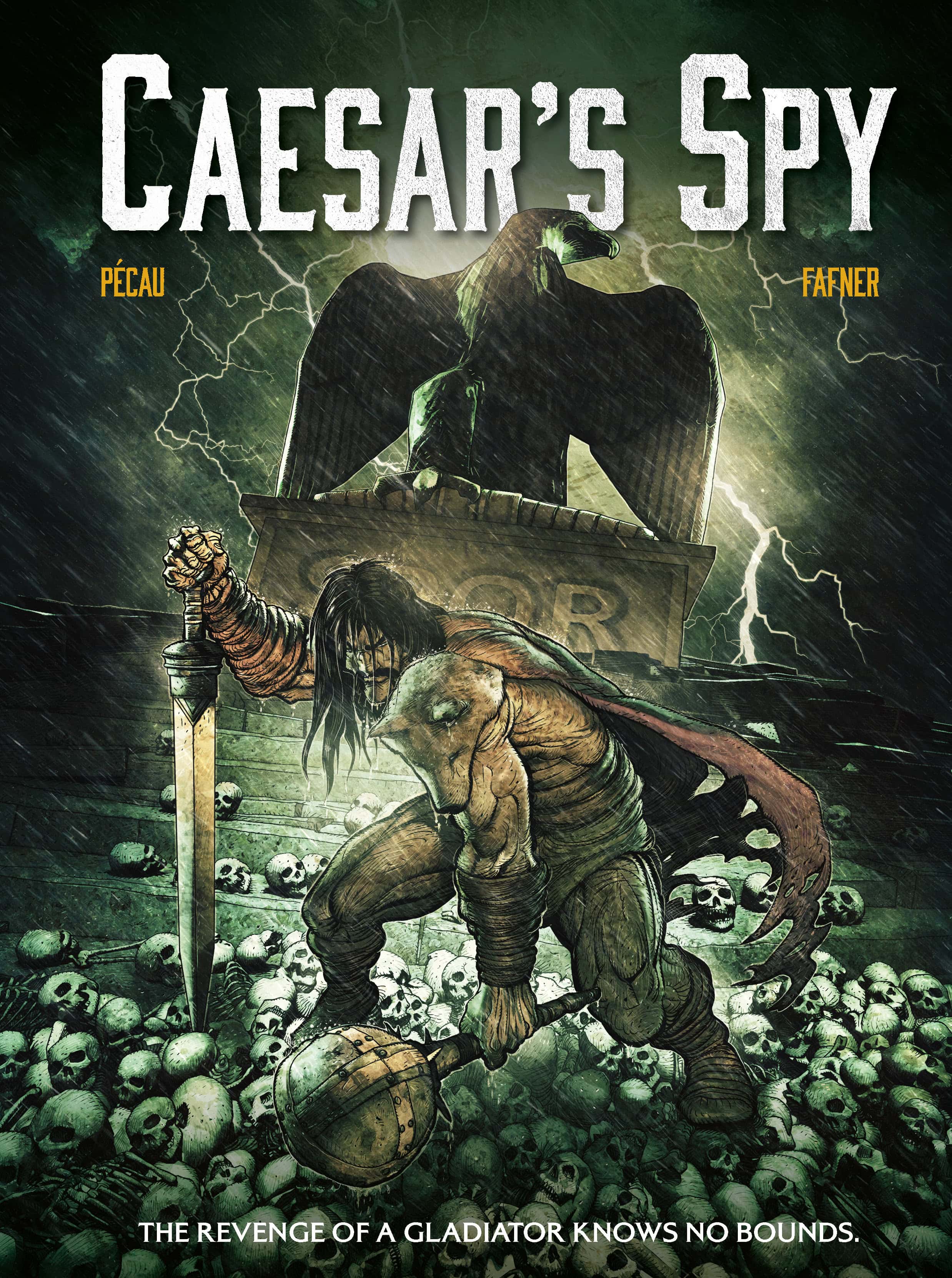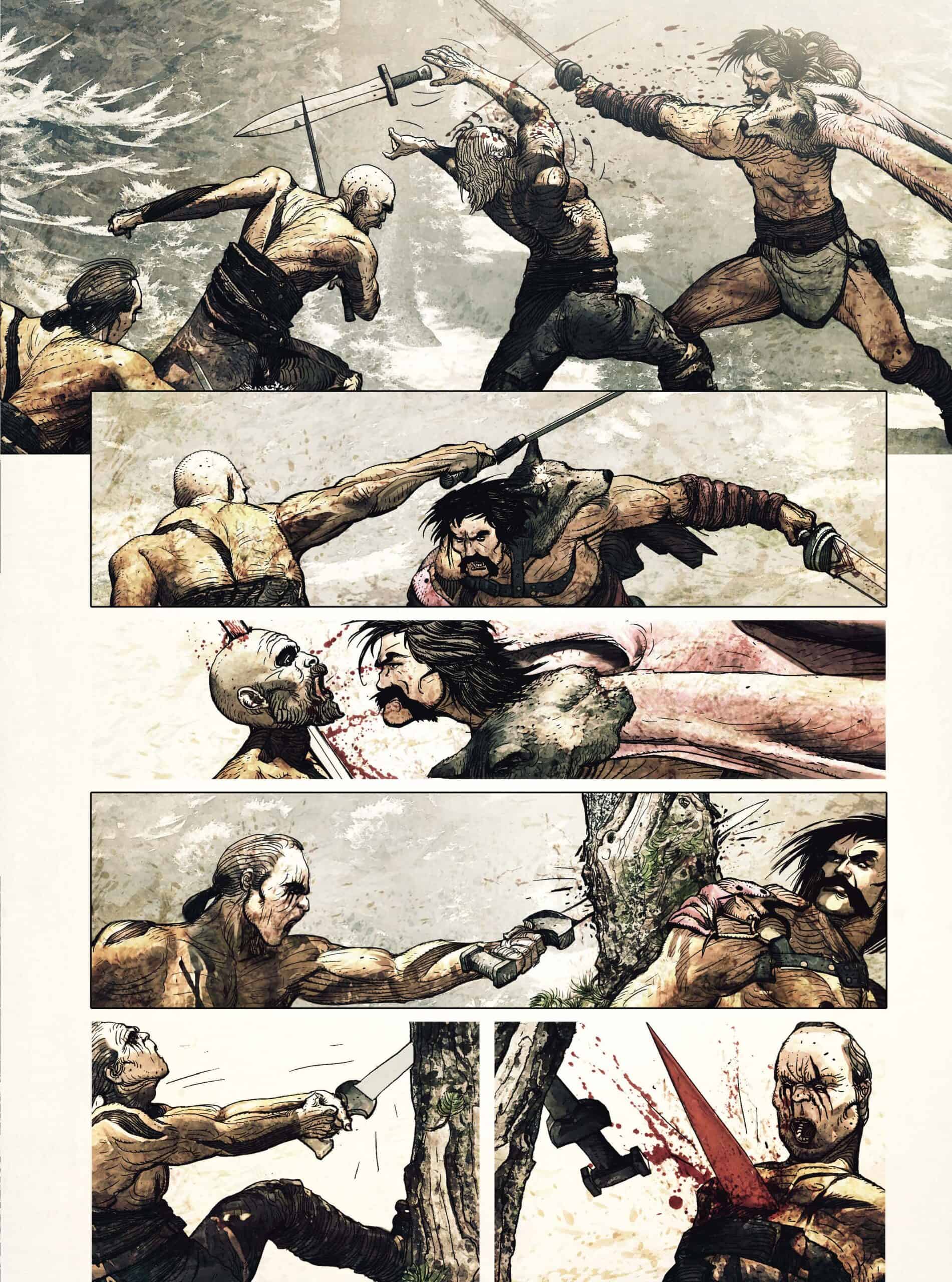Caesar's Spy

Recap
In Rome during the last days of the republic, a warrior from Gaul with a terrible desire for revenge links his destiny to Julius Caesar by becoming his spy.
When the Gallic mercenary Coax takes a Roman as hostage demanding ransom against his liberation, he hasn’t yet realised that he had kidnapped the young Caius Julius Caesar. Caesar doesn’t take long to seek revenge when the two men meet again. With Coax imprisoned to be sold as a slave and then as a gladiator.
But as fortune has it, Coax is offered the opportunity of becoming Caesar’s spy, a mercenary fit to be the gladius of the emperor.
Review
It’s practically Conan meets Ancient Rome in Caesar’s Spy. The book isn’t about the wild combat between Rome’s legions and the “barbarians” far beyond its walls, but the visceral fighting is one of its most memorable aspects. Brutal, close quarters combat deep in the woods between Coax and Germanics is how Caesar’s Spy begins.
The book never shakes this intensity. It especially informs Coax who, despite any reasonable interaction with Caesar and other Romans, projects a kind of unyielding strength. Fafner’s art is almost as revealing about Coax as Pécau’s dialogue.
Fafner’s work in Caesar’s Spy is highly detailed–exceptionally so when it comes to landscapes and other surroundings. Character outlines are relatively thick (though in a general sense they are still quite thin). Details on characters are achieved through much thinner, fairly short lines. They help establish a general sense of depth and heighten character features. Heavier shading is achieved through more concentrated patches of these lines.
Additional depth results from color choices Fafner makes. Shading made via linework is often accompanied by splotchy coloring, usually darker in shade than the surrounding areas. These kinds of contrasts are not limited just to more heavily shaded areas. In many cases Fafner uses coloring more than shading to imply light sources. Shading via linework is mostly limited to creating a greater sense of depth.
 Overall facial construction and features vary considerably between male and female characters in Caesar’s Spy. Fafner emphasizes beauty with female characters overall, though there is no push to make them unrealistic. Female characters all fit into standard expectations of attractiveness. Male characters, on the other hand, vary wildly. Coax is large, leaning toward an exaggerated musculature. Most victims of Coax and other characters’ vengeance are unattractive, sometimes lumpen, and often featuring lecherous expressions. Caesar, unsurprisingly, is presented as typically attractive with prominent cheekbones and a strong jawline. His body is more naturally muscled, not pushing the bounds like Coax’s.
Overall facial construction and features vary considerably between male and female characters in Caesar’s Spy. Fafner emphasizes beauty with female characters overall, though there is no push to make them unrealistic. Female characters all fit into standard expectations of attractiveness. Male characters, on the other hand, vary wildly. Coax is large, leaning toward an exaggerated musculature. Most victims of Coax and other characters’ vengeance are unattractive, sometimes lumpen, and often featuring lecherous expressions. Caesar, unsurprisingly, is presented as typically attractive with prominent cheekbones and a strong jawline. His body is more naturally muscled, not pushing the bounds like Coax’s.
This visceral brutality and characterization via appearance aside, Caesar’s Spy is built atop two indomitable personalities. The book is about Coax’s search for vengeance, but it might just as well be a character study of Caesar and Coax. Their transactional loyalty is as compelling as the vengeance stories at the heart of it. There are multiple instances of each character failing to appreciate what the other is capable of.
A chief difference between Caesar and Coax comes from their station in life. Caesar’s power comes entirely from his position atop the Roman Empire. Coax’s, who starts out a slave, comes through strength and willpower. It’s easy to assume that Caesar’s authority is absolute within their dynamic, but that is not always the case–certainly as Coax closes in on his opportunity for vengeance.
The principle storyline, Coax’s desire for vengeance, is surprisingly complicated. At times that need for vengeance radiates from him like spokes, leaving others in a position to take their own vengeance. Coax’s story is heavily interwoven with Caesar’s storyline in surprising ways, especially at the end. It is an extremely compelling storyline, especially within the historical period it takes place in. But it requires a very close reading. It even benefits from a second reading.
Final Thoughts
Caesar’s Spy is a historical epic. Themes of loyalty, power, and vengeance tie together to create a strong story. The art is intense. Readers looking for a powerful story will find one here. Caesar’s Spy is a must buy for fans of historical fiction generally, and the Roman Empire era specifically.
Caesar’s Spy: Loyalty or Vengeance?
- Writing - 8/108/10
- Storyline - 8.5/108.5/10
- Art - 8/108/10
- Color - 7.5/107.5/10
- Cover Art - 7/107/10





